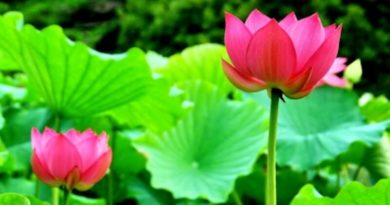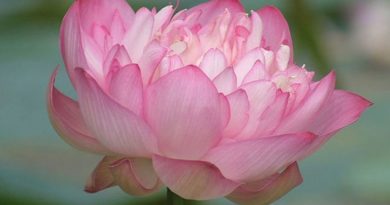A DISCOURSE ON THE ABODE OF THE NOBLE ONES – CHARACTERISTICS, FUNCTION, ETC.
A DISCOURSE ON THE ABODE OF THE NOBLE ONES – CHARACTERISTICS, FUNCTION, ETC.
Physical phenomena such as sound, smell, etc., may lend themselves to atomic analysis but the same cannot be said of mind and its elements. It is impossible to imagine greed, anger, etc., as particles. In point of fact, the yogi should focus only on the nature of a phenomena in terms of its characteristics, of a phenomenon in terms of its characteristics, (lakkha”na) function (rasa) and resulting phenomenon (paccua.t.thana). This is in accord with the instruction in Visuddhi-maagga (“Path of Purity) and Abhidhamma.t.thasangaha (“Compendium of Philosophy”).
So you should focus on the rising and falling of the belly with reference to its function, etc., The marks of vaayo-element are rigidity, stiffness and looseness. These marks will escape your notice in the beginning for your have to attend to the hindrances and overcome them by repression. Constant practice of mindfulness helps to overcome them and with the mind free from them the stiffness and rigidity become obvious in the rising of the belly. So too the abdominal falling helps to emphasise the quality of looseness.
The function of vaayo element is motion. Vaayo is air which moves from one place to another when its force is strong and remains still and rigid when the force is weak. You cannot watch rising and falling without being aware of motion. When you note the rising, you are aware of the gradual movent outward and in the case of falling, you become aware of the gradual movement inward.
The resulting phenomenon of vaayo element is the propulsion of things to wherever they tend. In the case of voluntary motion such as bending, the vaayo element tends in the direction in which the mind is inclined. There is inward motion when you bend your hand and outward motion when you stretch it. These two kinds of motions are apparent, too, in the rising and falling of the belly. The resulting phenomenon or paccupa.t.thama is any impression that occurs to our mind when we think of something.
While watching the rising and falling, the yogi may have disagreeable feelings that arise from cramps, pain in the body, or heat. In connection with such feelings, the Buddha says: “The monk is aware of the disagreeable feeling even as he experiences them.” Here “experience” as a verb is the translation of the Pali word vedayaami in the text. Myanmar Buddhists do not say, ” I experience heat.” Instead they say, “It is hot” etc., So the Myanmar yogi is instructed to make a mental note of the specific sensaion that he has, “It is hot” or “It is painful” and so on as the case may be.
In this way the yogi becomes aware of painful feelings. Its function is to depress the spirit, its resulting phenomenon is the irritating sensation. Thus the yogi contemplates strain, ache, etc., and realize the nature of painful feeling on the basis of its characteristics, function, etc., The same way be said of pleasant feeling and indifferent feeling.
It is the characteristic of mind or consciousness to know its sense-object. Hence we have different kinds of consciousness each being dependent on different contact (seeing, hearing, etc.,) with different sense-objects, (sound, smell, etc.,).
The function of the mind is to lead its concomitants (attendant dhammas). The mind takes the initiative and is followed by greed or faith or doubt. The resulting phenomenon of mind is its connection with the preceding mental state. By contemplating his mental states, the yogi becomes aware of their impermanence and their arising one after another without cessation.
If at the moment of seeing, you make a mental note of the event, you know that the eye and the colour are physical while the consicousness by way of sight is mental. The same may be said of the ear and the sound, the nose and the smell, the tongue and the taste, the body and the object of contact, each pair of these physical phenomena having their corresponding mental phenomena of sound-consciousness, scent-consciousness and so forth. The mental field of contact or touch-consciousness is very wide. Bending, stretching, walking, etc., all belong to it.









